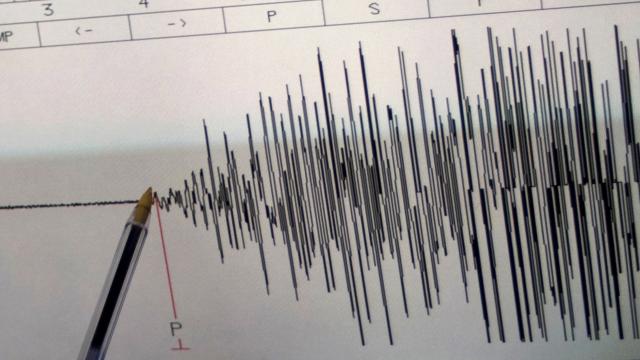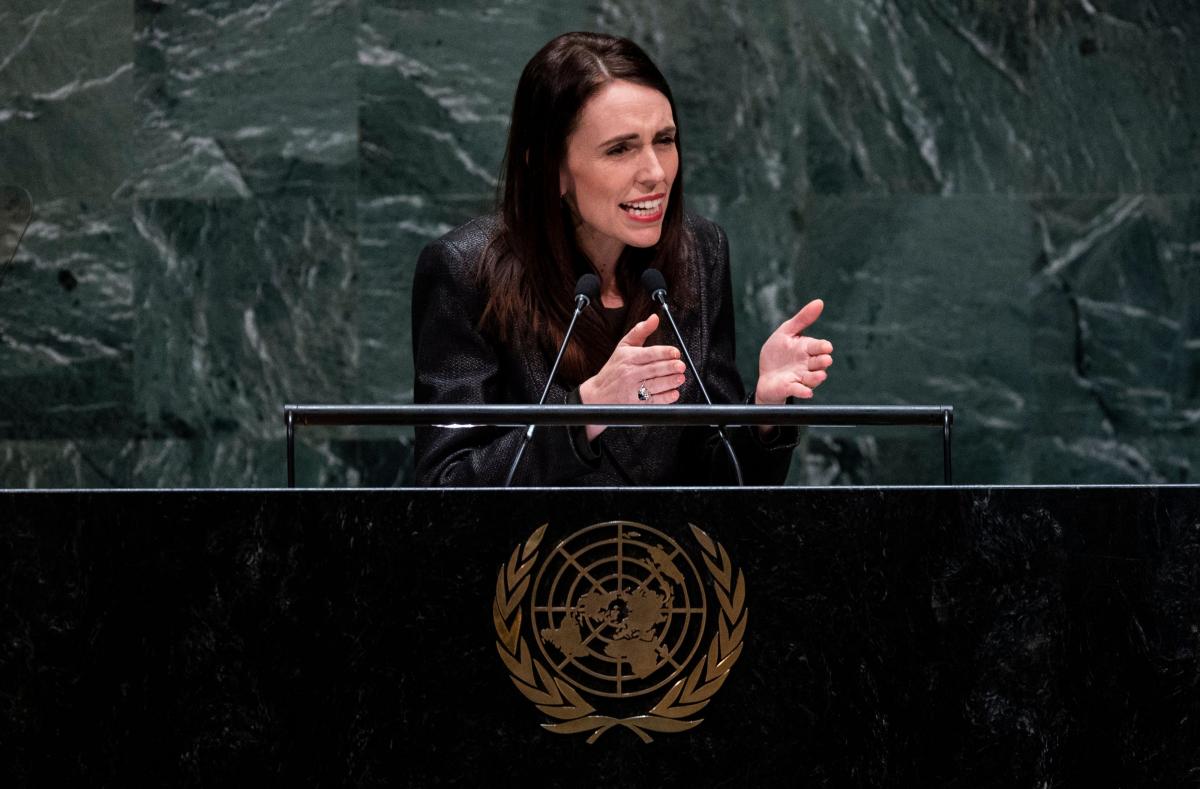Arthur Easton, a father of five, was peacefully living with his family when he was attacked by an intruder in his home. What went wrong in the subsequent investigation and court proceedings deserved to be in the law books. 36 years ago, that incident was once again on the world’s agenda. How? Let us tell you…

The city of Papakura in New Zealand was the scene of a terrible event on October 13, 1985. Arthur Easton, 52, a chief technician for the New Zealand Postal Service, and his two sons were attacked by a stranger who broke into their home at around 8:00 pm.
Arthur and his sons Brendan and Kim, aged 18 and 16, had a struggle with the intruder, during which Father Easton was stabbed. Easton, a father of five, bled to death at the scene, while Brendan and Kim survived.
- Area clearance and reconciliation of resentments in the Middle East
- Ukrainian grain exports: Neighboring countries face logistical problems
- First heatwave of the summer raises alarm in Western Europe
In their testimony, the children described the intruder as a black man about their height (180-182 centimeters). Three passing motorists also reported that a black man, who they believed to be of Maori origin, ran suspiciously from the Easton home.
Towards the end of the struggle, Brendan and Kim saw that the assailant was wielding a bayonet, which they reported to police. A search of the house led to the discovery of a bayonet and a wool cap believed to have come from the attacker’s head.
A portrait of the attacker was drawn by combining the testimony of witnesses and the conclusions of forensic experts. Police were looking for a strong, tall, right-handed Maori man. But it was Alan Hall, a shy, asthmatic, left-handed New Zealander of European descent, who was eventually taken into custody.
Hall, 23, was staying in a hut built in the garden of his family’s Papakura home. The bayonet and wool cap belonging to the Swedish army found by police belonged to Hall. Hall even told this fact to the police officers who knocked on his door during a routine neighborhood sweep.
But he could not explain how these items had gotten where they were found. He would say “lost”, “stolen”… Every once in a while he would say “I threw them away”. Moreover, on the night of the attack, he had gone for a walk alone and there was no one who could testify to his whereabouts during the incident.

There was enough reason to suspect him, but
In short, it could not be said that the police had no reason to suspect Hall. However, a “guilty” verdict from the court would have required more than reasonable suspicion, and from this point of view, the police’s job was not easy.
The crime scene investigators could not find a shred of evidence to suggest that Hall had been there. Not a drop of blood, not a feather from a wool cap, not a fingerprint. Moreover, during the struggle, one of Easton’s sons had smashed a squash racket against the intruder’s head. It was impossible for this not to have left a mark on his head. But no one Hall had worked with at work remembered seeing such marks the morning after the incident.
Brendan and Kim were also sure it wasn’t Hall they were struggling with. As we said above, they said the assailant was tall and black. But neither Easton’s sons nor passing motorists gave a description that was taken into account. In fact, the defense, the judge and the jury were not even aware of these statements.
NO ONE TOOK INTO ACCOUNT THE TESTIMONY OF THE MAN WHO SAID HE “SAW THE KILLER”
One of his most important witnesses was Ronald Turner. Turner had seen the suspect near the spot where the police dogs were searching. Later, when he heard a report on the radio about the murder of Arthur Easton, he immediately called the police and said he had seen “a Maori man”. In fact, in his written statement the next day, he said that the man had been looking around and had run and disappeared between two houses. “When he turned in my direction, I could definitely see that he was dark-skinned, not white,” he said.

Police knocked on Turner’s door again four months later. At that point Hall had become the number one suspect in the investigation and the police needed evidence to back it up. So they asked Turner if he was sure. Turner testified, “I’m 100 percent sure he was Maori. I don’t think he’s a Pakeha (white New Zealander of European descent), not even a brown Pakeha”.
However, this testimony did not reach the judge, the jury or Hall’s lawyers. In the prosecution’s files, all parts of Turner’s testimony regarding skin color and ethnicity were redacted. Since Turner was not put on the stand during the trials, no one, including himself, was aware that his testimony had been distorted. Therefore, the outcome of the trial process did not surprise anyone. In early 1986, the court found Hall guilty and sentenced the young man to 19 years in prison.
Hall was paroled in June 1995 after serving 8 years and 9 months in prison. In 2012, however, he was sent back to prison to serve the remainder of his sentence for violating the terms of his parole. Hall was released last March.
The moment when Alan Hall was declared the murderer of Albert Easton was a traumatic event, not only for him but for the entire Hall family.
The Hall family members who were in the courtroom when the verdict was announced were as if they had been given electric shocks as they got into their automobiles and drove home without saying a word. Alan’s younger brother, Geoff Hall, recently described the moment to the Guardian, saying, “Your blood rushes, your eyes glaze over, everything around you goes blurry.”
The police portrait of Alan Hall, the killer, was nothing like the Alan Geoff knew. In his family’s eyes, Alan Hall was a caring man who saved all his money to buy a plastic pool for their backyard or gave his mother a microwave oven to make her life easier. Geoff thought, “What do they see that I don’t see?”
It was that sense of “something’s wrong” that drove the Hall family to fight the verdict against Alan. That 36-year battle culminated last week when the New Zealand Supreme Court overturned Hall’s conviction.
Chief Justice Helen Winkelmann, who said that “grave errors have been made in the judicial process,” told the court that the prosecution’s deviation from accepted standards “may have been the result of either extreme incompetence or a deliberate and flawed strategy to secure a conviction.”
A FEELING OF HAPPINESS MIXED WITH SADNESS
The struggle to clear the stain on his record has taken a huge emotional, psychological and economic toll on Hall and his family. Spending the rest of her life trying to prove her son’s innocence, Anne Shirley Hall even had to sell her house in Papakura to pay for her detective work. Shirley Hall died in 2012.
In the moments last week when the Supreme Court overturned Hall’s conviction and closed the door to appeal and retrial, Geoff and his brothers were feeling the exact opposite of what they had experienced in 1986. “We all stood up and applauded,” Geoff said: “Even though we tried to keep our composure, fireworks were going off inside us. It was a historic moment and it was important that our whole family was there.”
But there was a sadness mixed in with the family’s happiness and relief. This unrelieved sadness stemmed from the trauma that the justice system had subjected Hall and his family to over the years.
“If this verdict had come within 10 years of Alan’s conviction we would have been absolutely delighted, but after so many obstacles your thinking changes, you learn to accept the situation and you become desensitized to the horror of what happened to Alan,” said Geoff. “You wake up in the morning and you say to yourself, ‘We have important things to do,'” Geoff said, adding that fighting for Alan gave their lives meaning.
NEW ZEALAND INNOCENCE PROJECT HELPED THE FAMILY
The court’s judgment lists one by one the grave mistakes made during the proceedings. While the testimonies of four eyewitnesses were not even included in the files, the most important details of Turner’s testimony, which the judge told the jury “This is particularly important”, were excluded from the prosecution files, as we said above.
Moreover, it was stated that the attitude adopted by the police while interrogating Hall, who was diagnosed with autism in 2019, was oppressive and far from fair. The court also noted that Hall was interrogated for extremely long periods of time without a lawyer present in the room. These facts came to light as a result of the Hall family’s numerous applications under the Official Information Act.
The New Zealand Innocence Project played an important role in bringing the facts to light. Inspired by the US study of the same name, the Innocence Project involves academics and students from Victoria and Otago Universities to investigate unjust verdicts, particularly those resulting from police manipulation of evidence.
“He’s not sitting on the sidelines with his hands tied, but I can tell you he’s a very simple person,” Dr. Matthew Gerrie, director of the project, told the NZ Herald in 2011: “Without the effort of his mother and siblings, nothing would have happened. He’s very upset about the verdict, but he doesn’t have the cognitive capacity to defend himself.”
The Innocence Project, which took up Hall’s case in 2008 and spent three years reviewing and re-reviewing all of the evidence, has subsequently made overtures to various local authorities for Hall’s pardon. Dr. Gerrie said at the time, “My personal opinion is that this is one of the most shocking cases in the New Zealand justice system. There were so many problems with the case and we only became aware of them recently, many years after the verdict was handed down. This case has not received the attention it deserves.”

“ARTHUR EASTON WAS WRONGED TWICE”
The project focused on the Maori detail in the eyewitness accounts. It was also an important development when detectives hired by the Hall family reached Turner and revealed that his real testimony had not made it into the court files.
“I see that my statement that the person I identified belonged to the Maori race has been omitted from my official statement,” Turner said in his sworn statement, which he said he signed without reading the statement minutes in the hands of the police officers who came to his door before the trial began:
“I had no such intention and I did not know that these words were excluded from the statement. I am very surprised because the police asked me a lot of questions about this. I still believe that the person I saw that night was Maori, and I will say so if I am taken to court. I found out that my statement led to the conviction of a European and I am sure that the person who ran away that night was not European.”
Hall told the NZ Herald in 2011, timidly, “Arthur Easton was wronged twice. They used his murder to convict an innocent man,” Hall timidly told the NZ Herald in 2011, explaining that what he wanted was not a pardon from the political authorities: “All I want is to go back to court and be tried in a trial where the whole story is told.”
ONE WAR IS OVER, A NEW ONE BEGINS
It took another 11 years for the full story to emerge, but justice has yet to be served. So what happens now?
“Nothing is over yet,” the Hall family responds. Geoff Hall told the Guardian, “We will now focus on the questions of ‘Why did this happen and who was the real killer?
New Zealand’s Justice Minister Una Jagose said she took “miscarriages of justice very seriously” and announced an inquiry into the case, led by Nicolette Levy. “I am determined to find out why and how Mr. Hall, Mr. Easton and the two families were let down by the justice system,” Jagose said.
The inquiry will be a first in New Zealand history, as there is no previous precedent for a prosecutor’s office focusing on its own errors and mistakes.
Alan Hall is preparing to seek compensation for the 36 years that were stolen from him. Hall’s lawyer, Nicholas Chisnall, did not specify the amount of the compensation claim, but said it would be far in excess of similar compensation paid in the past.
In 2015, Teina Pora received the highest compensation payment ever known in New Zealand legal history. Convicted of murdering her victim after raping her, Pora spent 21 years in prison. After Pora was found innocent, she was awarded 3.5 million New Zealand dollars (approximately 38 million Turkish liras) in compensation. Pora’s compensation was capped at $100,000 per year. This amount was increased to 150 thousand dollars. The fact that Hall’s entire story spanned 36 years also increases the amount.
FAMILIES DEMAND ACCOUNTABILITY
Geoff Hall said that they welcomed the decision of the prosecutor’s office to launch a swift investigation and said, “I hope the police and prosecutors will be interviewed under oath. Because as far as I can see, things were done that were clearly wrong in every respect.”
Geoff also stated that his brother is not expecting an apology and said, “What will mean the most to him is the resumption of the murder investigation and the investigation of those responsible for it.”
What about Arthur Easton’s family?
Geoff said that Easton’s family also suffered because they did not see justice being served, “They are victims of this and unfortunately they had to suffer while we fought our battle. Because they believed in the justice system, they believed in the police and in the end they realized that their belief was wrong.”
“Our hearts go out to Alan, his late mother and his family,” the Eastons said in a statement, describing the overturning of Alan Hall’s sentence as “a first step towards repairing the great harm done not only to Alan but to his entire family.”
“We trusted the legal system and it has failed both families,” the Eastons said, adding that they were shocked by the miscarriages of justice. We support the Hall family in calling for a full investigation.”
Published in the Guardian; “A brother’s 36-year fight against one of New Zealand’s worst miscarriages of justice” and “Alan Hall case: New Zealand begins unprecedented inquiry into ‘significant miscarriage of justice'”, published in Stuff, “Arthur Easton’s family react to quashing of Alan Hall murder conviction” and the news titled “Arthur Easton case: The missing evidence” published in the NZ Herald.




